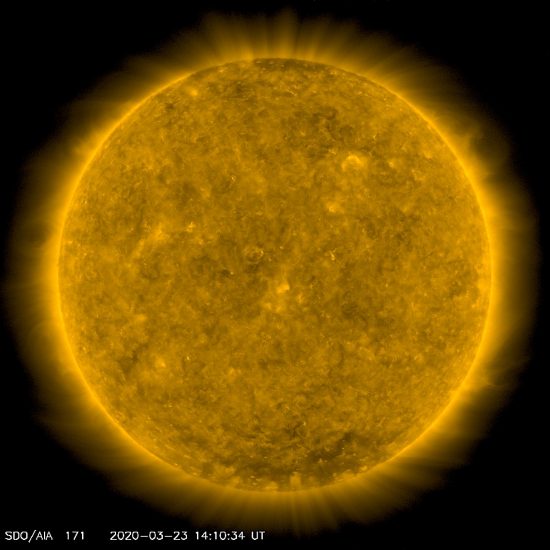
March 23, 2020
The Sun does not power itself.
“Yeah we all shine on, like the moon, and the stars, and the Sun.”
— John Lennon
The Solar Dynamics Observatory was launched from Cape Canaveral on February 11, 2010. SDO’s mission is to observe the Sun in a variety of wavelengths, from visible to ultraviolet and infrared. The Sun is conventionally thought to be a ball of hydrogen fusion, so aspects of its behavior should not directly contradict that theory.
In the thermonuclear model of the Sun, temperatures in its core are said to exceed 15 million Celsius, with compressive strain that exceeds 340 billion times Earth’s atmospheric pressure. 700 million tons of hydrogen are said to be converted into helium every second in the core. Radiation from those particle interactions is said to require more than a million years to escape from the core of the Sun, since the photons collide over and over again with the dense matter inside.
The surface of the Sun is the photosphere, followed by the chromosphere, and then the corona, the outermost part of the Sun’s visible atmosphere. One of the Sun’s greater mysteries is why temperatures rise to approximately 20,000 Celsius at the top of the chromosphere. However, the greatest mystery of all is why the corona can be as much as two million Celsius!
Electric charge flowing out of the Sun is balanced by electricity flowing into it, so perhaps the changes in temperature indicate the magnetic field polarity and the strength of its electric field. If the Sun is connected to the rest of the galaxy by Birkeland currents, then its puzzling characteristics are most likely due to fluctuations in electric charge arriving from the Milky Way’s generator.
In the electric model of stars, the Sun is a positively charged electrode, or anode, while the negatively charged electrode, the cathode, is located far beyond the planetary orbits and is known as the heliopause. The electric Sun model predicts that sunspots, flares, coronal holes, and all other solar activity come from fluctuations in galactic electricity. The energy powering the Sun is focused from outside and not expelled from inside a thermonuclear core, so its inverted temperature gradient conforms to an electric discharge within intergalactic Birkeland current filaments.
Data from the new Solar Orbiter mission, slated to circle the Sun from pole-to-pole, should confirm SDO’s ultraviolet studies, indicating that the solar wind speed varies inversely with coronal temperature—a completely unexpected result, since the opposite was predicted.
Electric Universe advocate Wal Thornhill wrote:
“The chromosphere has a strong electric field which flattens out but remains non-zero throughout the solar system. As protons accelerate down the chromospheric slope…they encounter turbulence…which heats the solar corona to millions of degrees. The small, but relatively constant, accelerating voltage gradient beyond the corona is responsible for accelerating the solar wind away from the Sun.”
In the electric model of the Sun, its electric field is strongest in the coronal holes, since protons are accelerated away. Outside of coronal holes, where the electric field is weak, protons move more aimlessly, resulting in more collisions. That random movement equates to temperature. Therefore, the solar wind is fastest where the corona appears coolest and is slowest where it appears hottest.
Stephen Smith
The Thunderbolts Picture of the Day is generously supported by the Mainwaring Archive Foundation.












